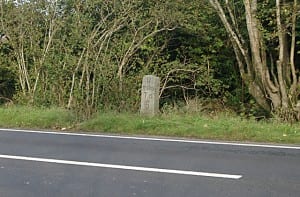Teaching and Learning in a Digital Age (TELEDA) begins with a reading of Digital Natives Digital Immigrants. Written in 2001, Prensky’s paper offers a provocative but enduring image of technology as the agent of changing brains and behaviors of young people. I’m interested in the persistence of this myth of the digital native. In particular the conceptual leap it assumes between access and understanding. It reminds me of the medieval helpdesk video (2.44) direct link http://www.youtube.com/watch?v=pQHX-SjgQvQ
I like the line at 1.38 ‘When you’re used to paper rolls it takes some time to convert to turning the pages of a – book.’ Consider the conversion from pen and paper to a keyboard and screen. Technology is about people not machines. the problem is those promoting machines forget they’re the minority.
Put the word native into a thesaurus. It offers citizen, inhabitant, dweller, resident. Language is like yeast. It grows. Meaning can be cultivated but the surrounding conditions must be right for change. Today the term native can be defined as to live in one place, to be positioned or located. Today we are all digital natives. One way or another we engage with technology. Prensky’s distinction needs revision. The dividing lines have changed.
The physical ability to use a computer and access the internet, the cognitive knowledge of how to maximise usage and stay safe online are 21st century literacies. Society evolves. It rarely jumps. The gap between Gutenberg and Google is not so wide after all. They are different ways of doing the same things. Communicating. Disseminating. Excluding.
The risk of the myth of the digital native is less about young people born into a technology enabled world, it’s about what happens when they grow up. It’s less about education having to shift its parameters to cope with changing brains and behaviours. It’s about remembering and respecting human diversity and difference. The risk is those who work with technology are losing this memory. As Prensky’s digital natives become creators of 21st century reality, the risk – where technology is concerned – is they might not have the memory in the first place.
If technology has a prominent role in your life, and the lives of family, friends and colleagues, you become protected behind digital walls. This digital closeting prevents you from seeing how the daily struggle with technology is the rule not the exception. This is particularly evident within higher education where those who teach and support learning are employed for their subject specialisms not digital literacies.
Prensky calls for the world to adapt to the requirements of the digital natives but I think this needs to be reversed. Those born into the world of google specs not gutenberg text, whose digital parameters mean they’re unable to see beyond a browser window, need to go and talk to real people face-to-face and find out how the other half live.
Half? Maybe more. Those for whom technology is a daily challenge and struggle probably accounts for most of us.


